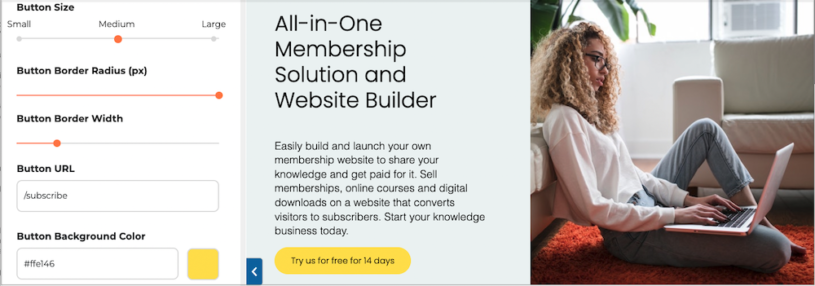Advertising revenues are filtering down from the big global portals (Yahoo, MSN, AOL, etc) to the smaller niche content websites. The days when advertisers were just focused on the number of people who viewed their ads are gone. Today the relevancy of the audience is what is most important. This is particularly true for small advertisers looking to reach very specific audiences.
To increase your chance of being approached here are twenty tips to consider.
The Essentials
When an advertiser appears on any website they are associating their brand with the content, reputation and perceived value of the site. Therefore you need to ensure that everything you do projects a professional image which advertisers can identify with. To achieve this goal, these are the things you should consider:
- Professional Design – Your sites' design will make or break most advertising deals. If the site looks amateur, no established business will want to be associated with it
- Quality Content – Your content should be honest, exclusive, accurate, relevant and timely, so this quality reflects well on your advertising partners
- Credibility – the site and the people behind it should be visible and credible both within the site and on the broader Internet. The two steps to achieve this are to have a fantastic About page and to build your broader reputation using social media services, including having a blog, Twitter account and Facebook page
- Community – remember, advertisers don’t care about you; they care about your audience. You need to demonstrate you are really engaged with them. You can do this by encouraging commenting, running a forum, allowing members to publish their content and having a popular email newsletter
Make Advertising Easy
Make it easy for anyone wanting to advertise on your site to do so. It amazes me how few content websites and blogs have a page that clearly explains how advertisers can promote their products with them.
- Information for Advertisers – The first and most obvious step is to create a dedicated page with information for potential advertisers. Sounds obvious but very few content sites have one
- Offer Fixed Pricing, Not Volume Pricing – online advertising is usually based on CPM rates, which is a price for every thousand times an ad is shown. This pricing is not suitable for niche sites with small, but highly targeted audiences. Therefore you should charge based on a fixed price for a fixed period e.g. Button Ad on Homepage = $400 per month
- Clear Descriptions – Provide all the details an advertiser needs to make a buying decision, including ad sizes, prices, restrictions (e.g. no adult content ads), what the advertiser needs to provide, how the ads are served, what data you provide, etc
- Clear Pricing – Many websites ask advertisers to email them for pricing. This WILL reduce the number of advertisers you attract. Be transparent and publish your prices on the site in a clear table
- Provide Options – Give advertisers a choice of options. This could include banners, 125 x 125 button ads, sponsorship, paid reviews, etc
- Show Examples – Many advertisers are new to online advertising, so give examples of how each of the ad options looks on a page. Having simple screenshots can make the difference between choosing your site or your competitors
- Discount For Series – Offer discounts for longer term contracts, but make sure you nail down the payment terms
- Share Your Numbers – Any stats will help you persuade your prospects. It could be audience demographics which can be taken from Google Adplanner, conversion rates that advertisers have achieved, how long the site has been going, number of articles, frequency of updates, number of times you have been on Digg front page, number of Twitter followers, etc
- Testimonials – If you have happy advertisers clients ask them for testimonials; they are a very important way of building credibility and reassuring prospects that you offer a quality service worth paying for
- Be Creative – Think about all the ways that you can promote an advertiser’s product or service to your audience, or broader community – don’t just think of display ads:
- Sponsorship of newsletter or categories
- Ads in podcasts
- Ads within videos
- Product endorsement i.e. use an advertisers product so your audience copy you
- Sponsorship of events
- Make Contact Easy – Make it easy for potential advertisers to contact you. Have your contact details on the Advertise page so they don’t have to go looking elsewhere on the site
- Make Buying Easy – Advertisers should be able to pay for their advertising from within the Advertise page. If you don’t have payment processing on your site, simply add a PayPal ‘Buy Now’ button
- Offer An Ad Design Service – It is cheap, easy and quick to get ads designed. Offer your advertisers a design service and then back it off to a company like for a premium service
Advanced Strategy
- Cluster Relevant Sites – Advertisers are always looking for easy and cost effective ways to reach as many of their target audience as possible. To meet this need you could cluster together a bunch of sites aimed at a common audience and sell advertising packages across all the sites. The revenues would be split between all the site owners with you taking a greater percentage for managing the process. The ads could be served through a single ad serving solution such as OpenX.
Conclusion
Today advertisers are much more focused on reaching relevant audiences than they ever have been in the past. This favours’ niche website owners. However you need to be proactive in making your site attractive to advertisers, to get yourself in the position where they are approaching you, rather than you having to chase them.
Louise
We believe that everyone should be able to publish digital content and make money without being dependent on ad networks or giant platforms, or wrestling with complicated publishing solutions. SubHub empowers everyone to easily publish content and make money from subscriptions, membership, e-commerce and other options.


